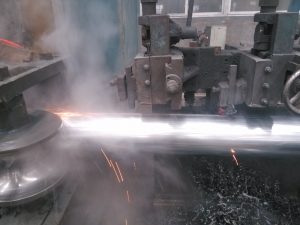Steel prices will show a small fluctuation trend later
Steel prices have been subject to significant volatility in recent times, driven by various factors such as raw material costs, global demand-supply dynamics, and economic conditions. While the market has experienced notable fluctuations, there are indications that steel tubing prices may exhibit a trend of small fluctuations in the near future.
One of the factors contributing to the expected small fluctuation trend is the stabilization of raw material prices. Steel production relies on the availability and cost of raw materials such as iron ore and alloy metals. After witnessing sharp increases in raw material prices due to supply constraints and high demand, there are signs of stabilization in recent months. This stability in raw material costs provides a more predictable cost base for steel manufacturers, which can contribute to a more stable pricing environment for steel products.
Another factor that may contribute to small fluctuations in Hot dipped galvanized steel pipe price is the gradual recovery and stabilization of global demand. The steel industry is closely linked to sectors such as construction, automotive, and manufacturing, which experienced disruptions during the pandemic. As economies recover and industries resume operations, demand for steel is expected to increase steadily. However, the pace of recovery may vary across regions, leading to relatively modest fluctuations in steel prices rather than sudden spikes or declines.

Moreover, government policies and trade regulations can influence the stability of steel prices. Governments may implement measures to support domestic industries of square steel pipe, such as imposing tariffs or export restrictions. These policies can impact the availability and cost of steel in the market. However, if governments aim to strike a balance between supporting local industries and maintaining stable prices for consumers, it can contribute to a more controlled pricing environment with smaller price fluctuations.
Additionally, market competition and production capacity can influence steel prices. As demand gradually recovers, steel manufacturers may increase their production capacity to meet market needs. This increased supply can help mitigate price volatility, as higher production levels provide a buffer against sudden price spikes. However, it is important to note that the market balance between supply and demand of rectangular steel tube remains a key factor in determining the extent of price fluctuations.
Furthermore, the normalization of economic conditions and reduced uncertainty can contribute to a more stable pricing environment for steel. The pandemic introduced significant uncertainty and disruptions to global markets. As the situation stabilizes and economic activities resume, businesses and consumers gain more confidence and make more predictable decisions. This increased stability can help temper price fluctuations in the steel market.
Tel: +86 18202256900 Email: steel@fwssteel.com










